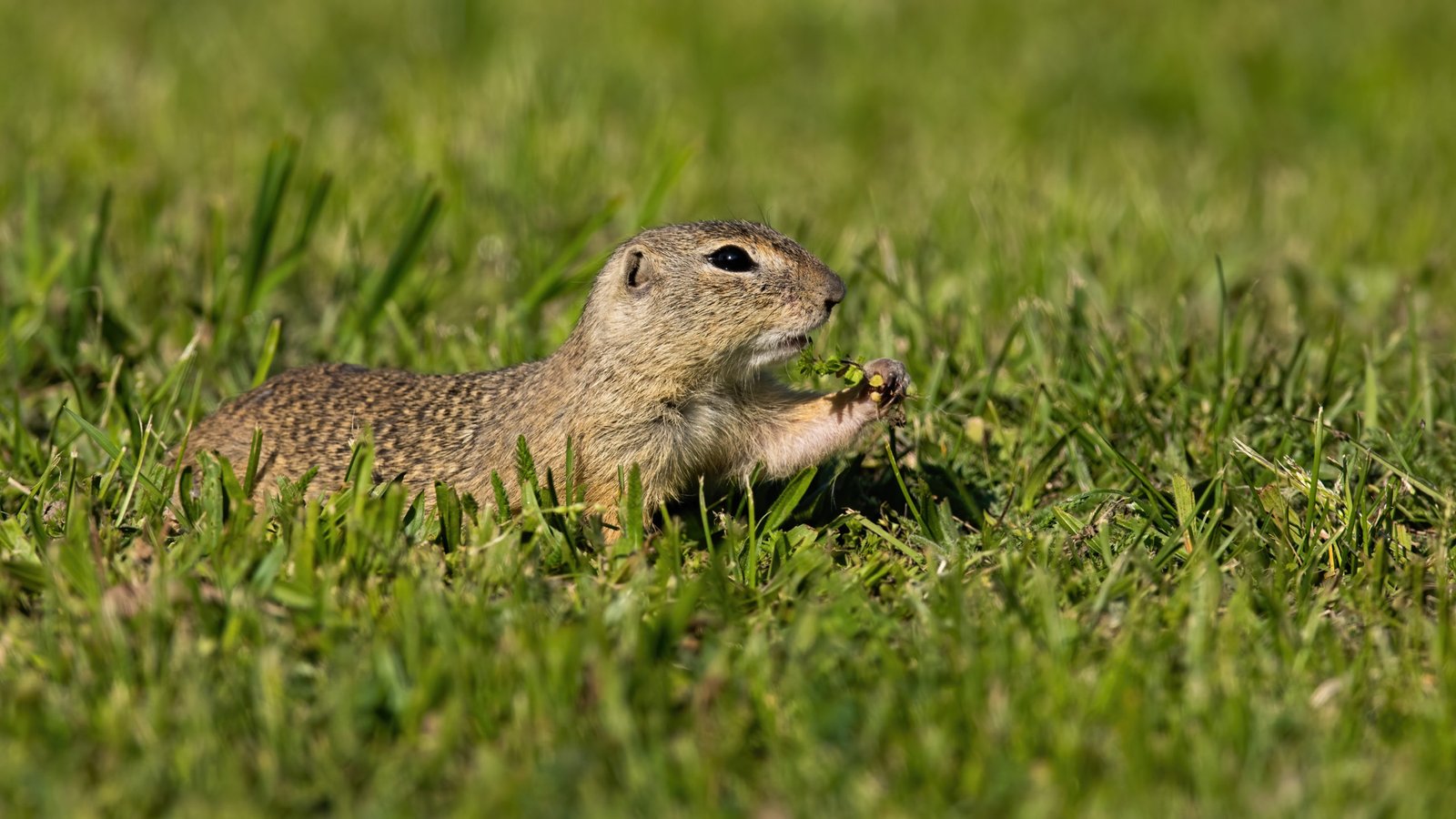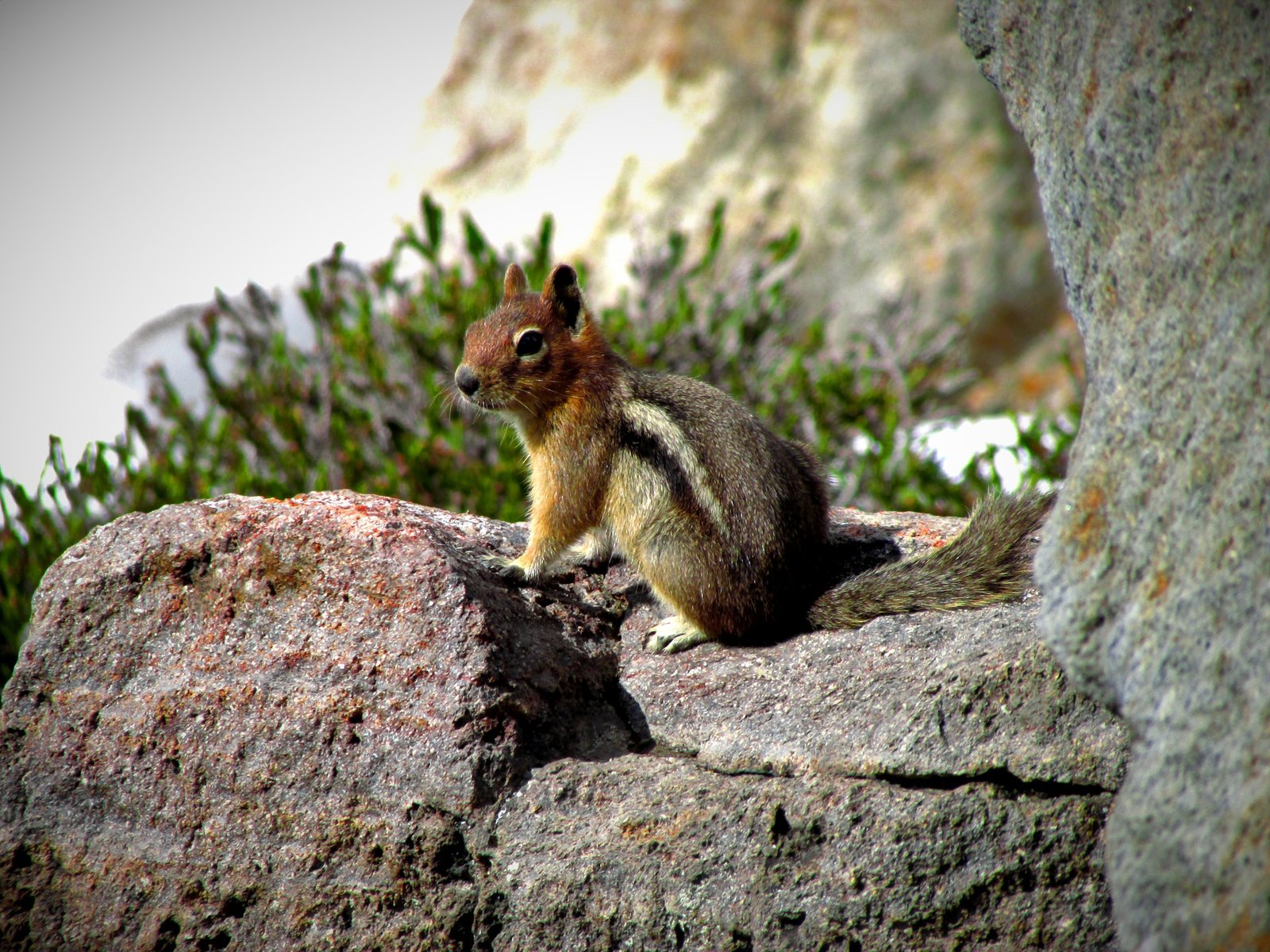Ground Squirrel: Marmotini

Description Of Ground Squirrels
Ground squirrels are a family of more than 24 genera of rodents (Sciuridae). This refers mostly to medium-sized species such as Otospermophilus beecheyi (California ground squirrel) and includes larger species such as marmots and smaller species such as chipmunks. Ground squirrels are notorious for standing tall on their hind legs to detect potential threats, often referred to as ‘groundhogs’ or ‘gophers.’
They vary significantly in size with so many genera and species of ground squirrel. The heaviest squirrels, weighing up to 18 lb, are marmots (8 kg). Chipmunks, by contrast, weigh as little as (0.1 lb) 50 g.
Their bodies are long, usually slender, with short legs. They have relatively long, strong claws that allow them to dig and, in some cases, climb.
This squirrel’s coat ranges from dark reddish or brown to gray and olive tones. Most species show some form of a pattern on their furs, such as a chipmunk’s stripes or lines of spots and dappling. They have a lighter underside, often white, lighter gray, or brown. 1Go To Source biologydictionary.net -“Ground Squirrel”
Learn More: Types Of Squirrels
Ground Squirrel Behavior

In colonial burrow systems, ground squirrels live, sleep, rest, rear young, store food, and hide from danger. Their burrows have a diameter of about 4 inches, although older burrow entrances can sometimes be quite a bit larger. The length of burrow systems typically varies from 5 to 30 feet. Burrow systems are constructed within 2 to 3 feet of the ground surface, but they can be more than 6 feet deep. Burrows can be single tunnels or complicated systems of branching paths.
During the day, mainly from midmorning through late afternoon, ground squirrels are active, especially on warm, sunny days. During the year, they have two dormancy periods. Most ground squirrels hibernate during the winter months, but some young ones can be active at this time, particularly in areas where winters are not severe.
Most adults go into a period of inactivity, called estivation, that can last a few days to a week or more, during the hottest times of the year. The burrow appears open at the entrance during these periods, but the squirrel plugs it near the nest with soil.
Reproduction Of Ground Squirrels
Depending on weather, elevation, and latitude, the onset of breeding can vary in ground squirrel populations. Generally, for longer periods, populations at higher altitudes and in colder climates hibernate and therefore breed later. Mating in warmer locations can start as early as January and continues until July. From March through June, peak mating happens.
Ground squirrels produce only a single litter per year. The average litter is 5 to 8 young, but it has been observed to be as small as 1 and as large as 15. The young are born and grow quickly in the burrow, emerging when they are about 6 weeks old from the burrow. They reach adult maturity at 6 months of age. 2Go To Source ipm.ucanr.edu -“Ground Squirrel”
Ground Squirrel Habitat
Ground squirrels prefer highly visible open terrain, enabling them to detect predators approaching. However, about 80% of the natural prairie habitat has been transformed into agricultural and urban areas. Ground squirrels have adapted to live within human-modified habitats such as city parks, over-grazed pastures, edges of cultivated fields, and perennial crop fields.
Each ground squirrel occupies a home range, including one or more burrow systems, as adults, and allows only its closest relatives to intrude. The main burrow system and favorite feeding sites comprise the core area of the home range and cover 20-40 m2 during the active summer season. Depending on the season, sex, and age of the squirrel, the size of each squirrel’s territory varies. 3Go To Source research.uleth.ca -“Habitat & Home Range of Richardson’s Ground Squirrels (also known as gophers)”
Range Of Ground Squirrels In North America
Ground squirrels inhabit North America’s short and mixed-grass prairies, including portions of Canada’s Alberta, Saskatchewan, and Manitoba. They may also live in parts of the United States, including Montana, North Dakota, South Dakota, California, and Minnesota.
Ground Squirrel Diet

Ground squirrels use cheek pouches to collect more food than would otherwise be possible in one sitting while they are foraging. They are also known for caching or storing food. They exploit many sources of food that are likely to contribute to their success as a species.
The diet of these animals is primarily seed-based, as their genus name would suggest. California ground squirrel consumes seeds, barley, oats, and acorns. Fruits, such as gooseberries and pears, and quail eggs are also eaten. When available, they include insects in their diets and have been known to eat grasshoppers, crickets, beetles, and caterpillars. Roots, bulbs, and fungi, such as mushrooms, are also eaten. 4Go To Source animaldiversity.org -“Spermophilus beecheyi California ground squirrel”
Predators Of The Ground Squirrel
Rattlesnakes frequently prey on ground squirrels. Eagles, raccoons, foxes, and weasels also prey on them.
As adults, specific populations of ground squirrels have different levels of immunity to rattlesnake venom. Squirrels will roll-on or chew shed snakeskin to disguise their scent from the snakes. Mother squirrels will lick their pups to disguise them as well.
Another approach is for a squirrel to swivel from side to side around its tail. The tail-swishing appears to convey the “I am alert and ready to fight!” message to a snake. 5Go To Source ovlc.org -“CALIFORNIA GROUND SQUIRREL Otospermophius beecheyi”
Ground Squirrel Diseases
The spread of Rocky Mountain spotted fever, rat-bite fever, tularemia, Chagas’ disease, adiospiromycosis, and encephalomyocarditis are associated with ground squirrels.
They can notably serve as reservoirs for sylvatic (bubonic) plague, a highly infectious disease caused by Yersinia pestis bacteria. Plague is transmitted through flea bites to individuals and direct contact with infected hosts. When someone visits or lives in areas where ground squirrels or other rodents are infected, individuals and their pets can get the plague, this may include rats living in close contact with individuals.
Intreating Ground Squirrel Facts
- In the wild, Ground Squirrels may live for up to 6 years
- They create habitats for other animals that occupy empty burrows, such as rodents and snakes
- To warn others of predators, they give a high pitched alarm call 6Go To Source naturemappingfoundation.org -“California Ground Squirrel”
Sources:
- Laidlaw, Shawn. “Ground Squirrel.” Biology Dictionary, Biology Dictionary, 1 Sept. 2020, biologydictionary.net/ground-squirrel.
- Quinn, Niamh, et al. “Ground Squirrel Management Guidelines–UC IPM.” University Of California Agriculture & Natural Resources, Regents of the University of California, Dec. 2018, ipm.ucanr.edu/PMG/PESTNOTES/pn7438.html.
- Michener, Gail. “Richardson’s Ground Squirrels: Habitat & Home Range.” University Of Lethbridge, University of Lethbridge, research.uleth.ca/rgs/habitat.cfm.html. Accessed 26 Jan. 2021.
- Lima, M. 2003. “Spermophilus beecheyi” (On-line), Animal Diversity Web. Accessed January 26, 2021 at https://animaldiversity.org/accounts/Spermophilus_beecheyi/
- Ojai Valley Land Conservancy. “California Ground Squirrel.” OVLC, OVLC, 9 Nov. 2015, ovlc.org/ojai-wildlife/california-ground-squirrel.
